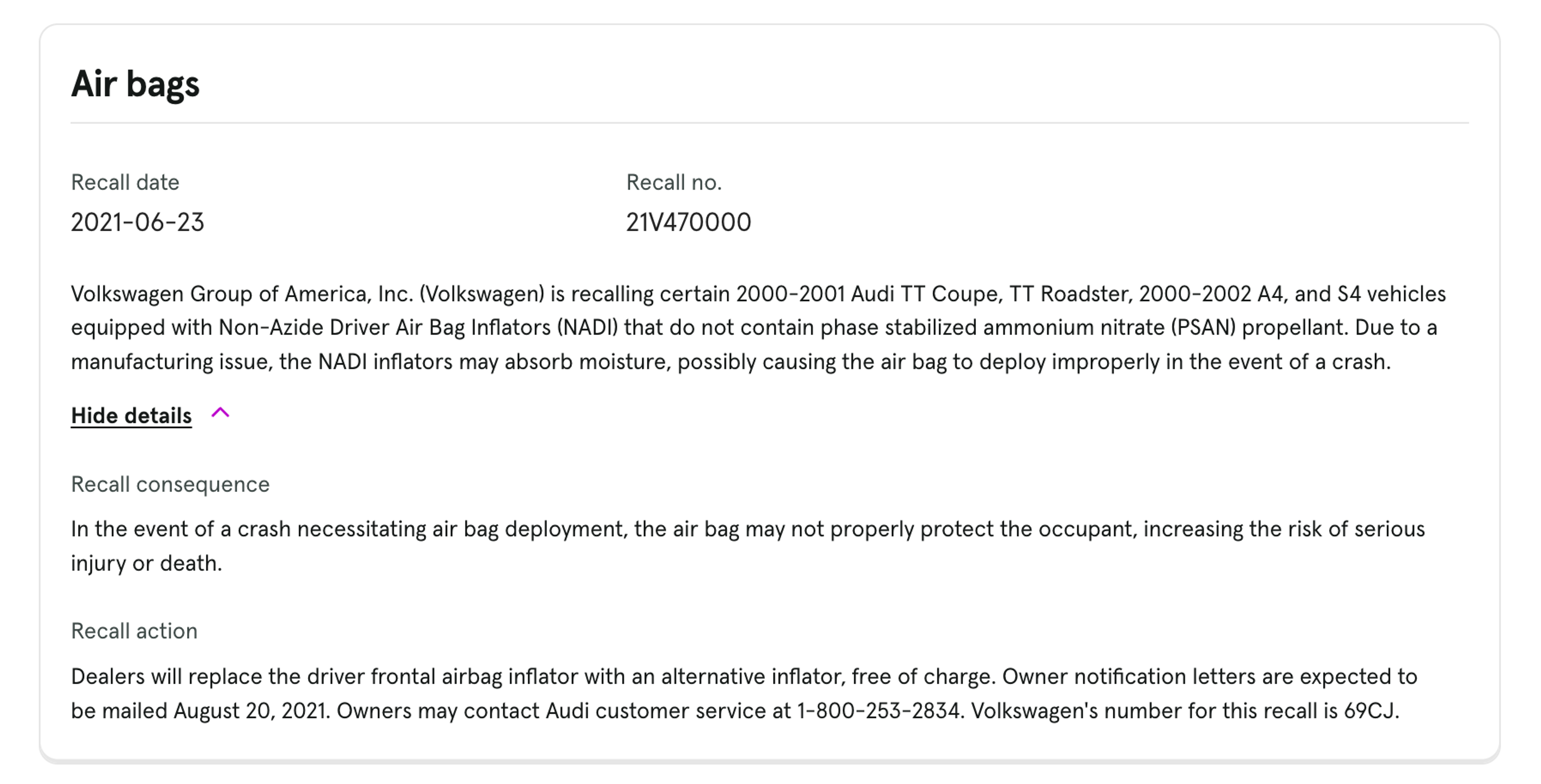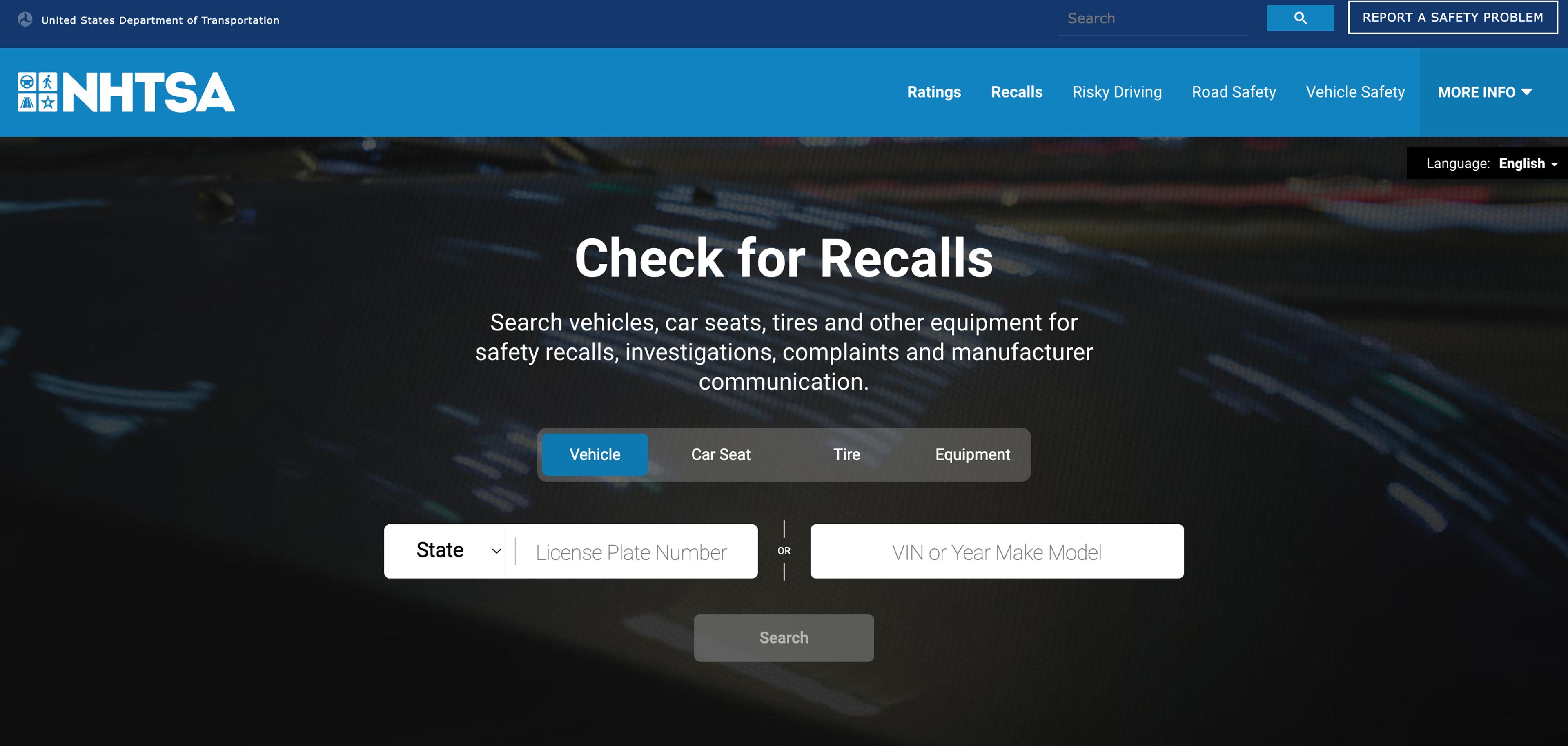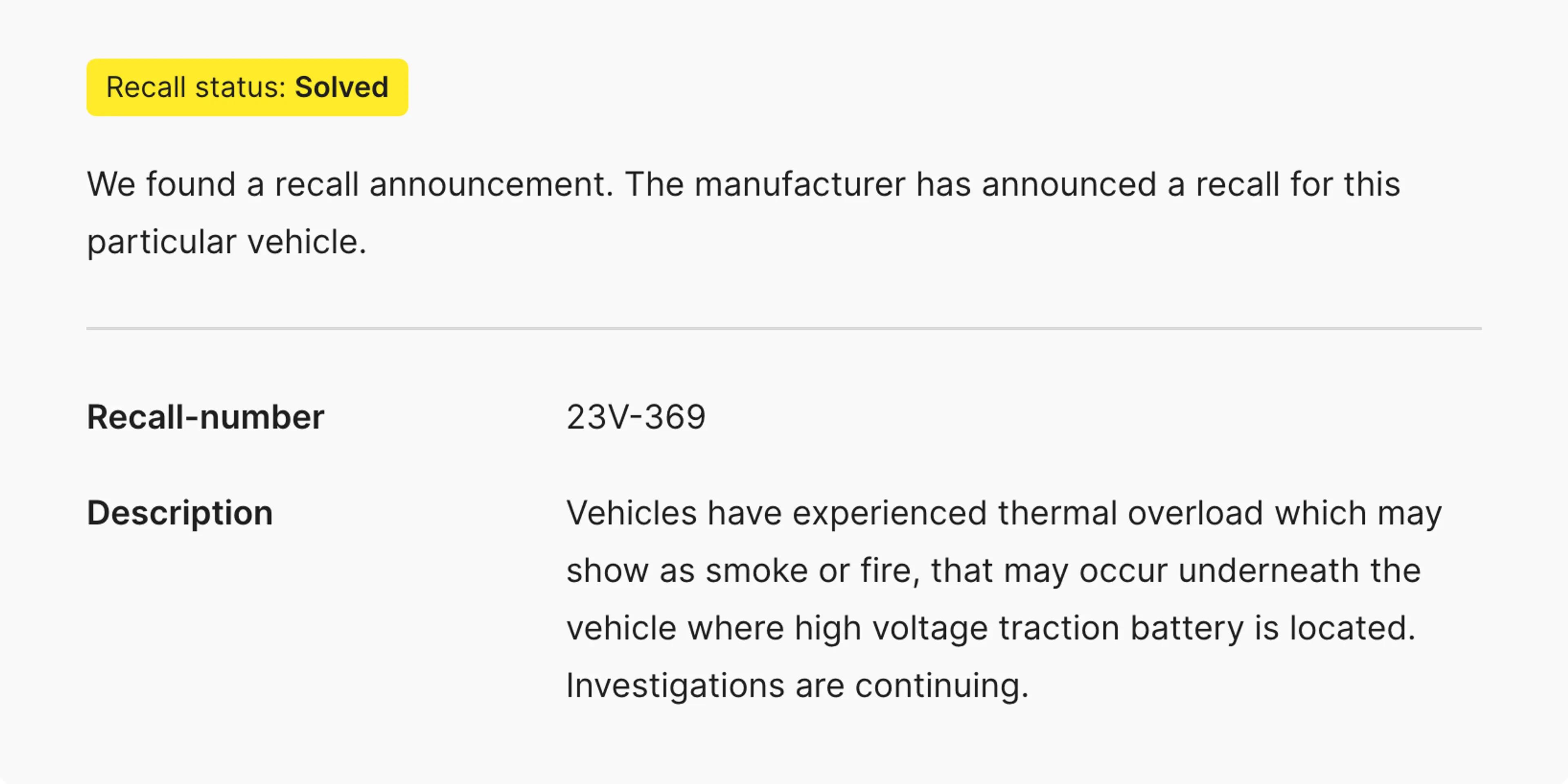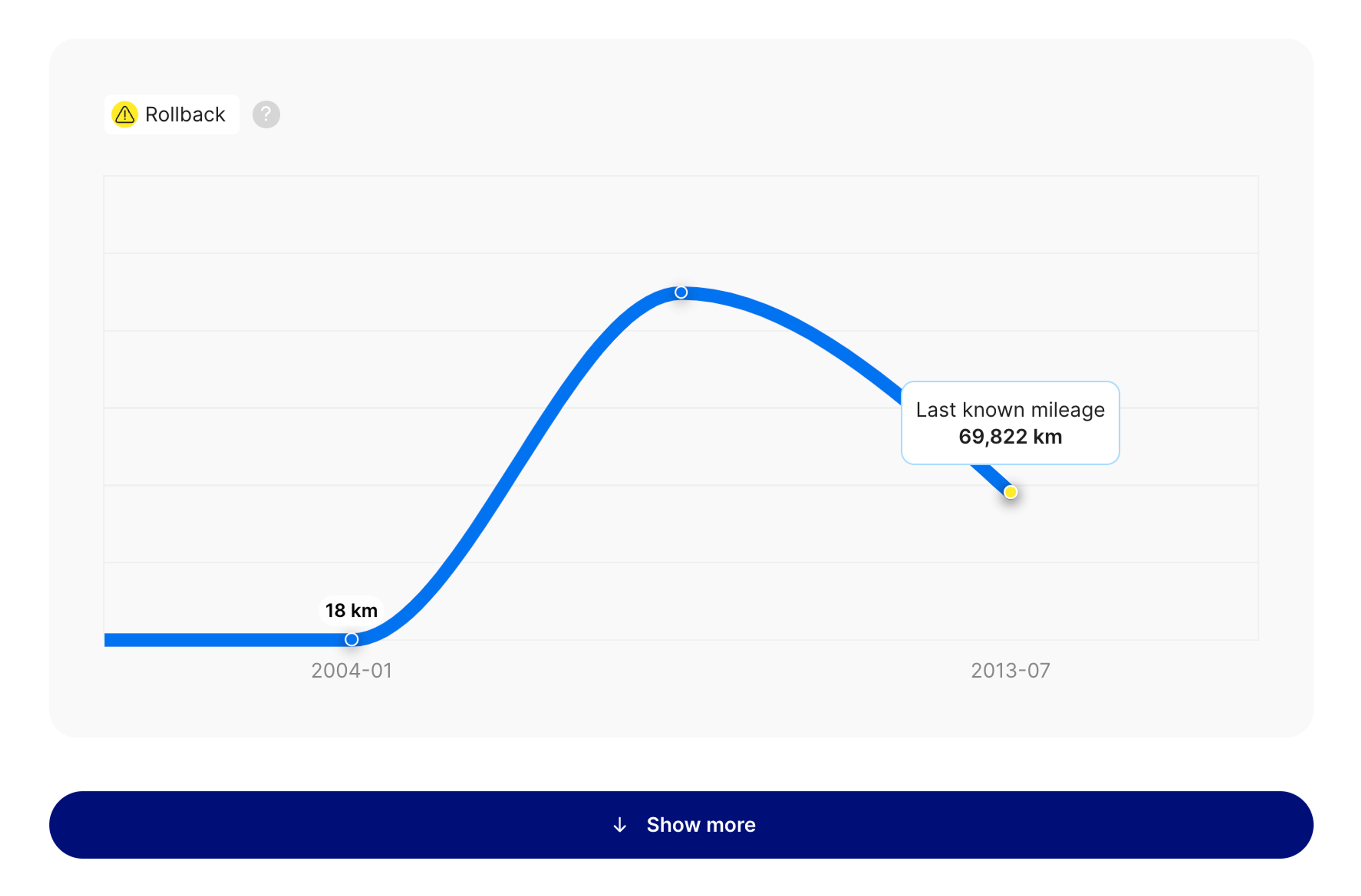
Receiving a car safety recall notice can be unsettling, but it's often fixable if you act instead of panicking. These notices can be issued for various reasons, but addressing them promptly ensures your vehicle's reliability and safety on the road.
Whether you recently received a recall notice or are unsure if your car has one, the text below has the answers you need.

Check if your vehicle has a safety recall!
Enter a VIN code to learn if a vehicle you own or want to buy should be taken for repairs!
What is a recall?
A car recall is a notice that manufacturers or relevant institutions issue once they determine that a specific make and model has a safety-related defect. It means that a vehicle may not comply with minimum safety standards and could potentially endanger the driver, passengers, or other people on the road.
Vehicle recalls aim to warn drivers, provide a solution, and prevent accidents or injuries related to identified defects. In many instances, the repairs or replacements required by a recall are done at no cost to the vehicle owner, including parts and labor.
What happens during a vehicle recall process
Depending on the region and existing regulations, the process of initiating car recalls can vary, but it typically looks like this:
1.Manufacturer or regulatory agencies (like the NHTSA in the US or the European Commission in Europe) identifies a safety concern in a particular make and model. This could be done through internal testing, based on reports from dealerships or customer complaints.
2.Experts investigate the issue to find its cause, understand potential dangers and consequences, etc.
3.Once done, they issue a recall and notify affected vehicle owners. This notification usually includes details about the recall, potential risks, and instructions on how to proceed.
After the issue is fixed and everything is documented, manufacturers and regulatory agencies tend to monitor the effectiveness of the recall, ensuring that vehicles are properly repaired. If necessary, they will send a follow-up with additional information.
Why is it important to respond promptly?
While ignoring a safety recall could potentially lead to legal implications, it’s not just about compliance. Put simply, a recalled car poses a risk to everyone on the road. Prompt action can reduce that risk and ensure your vehicle operates safely.
How to respond to a safety recall notice
There are several crucial steps on what to do when your car is recalled. Responding promptly and following these steps ensures that your vehicle remains safe and compliant with manufacturer standards, providing you peace of mind while on the road.

Step 1: Read the recall notice carefully
In most countries, vehicle manufacturers are legally required to notify vehicle owners, dealers, and distributors about safety recalls. Therefore, you can expect to receive a recall notice through mail, email, or, in more urgent cases, a phone call.
The exact steps after a car recall notification are generally provided in the recall notice. Read it carefully and understand the specific issue affecting your vehicle.
Step 2: Contact your dealership
Generally, what the recall notice will tell you to do next is to contact your dealer. Even if the recall is issued, not every vehicle of a specific make and model year may be affected by it. Different manufacturing dates, production batches, or specific equipment installed in the car can result in only certain vehicles being impacted.
Therefore, contacting your dealer and providing them with the necessary information (usually a vehicle’s VIN) can help you learn whether your car is affected.
Step 3: Schedule an appointment
Although not all car recalls are the same – some are just minor problems like a faulty door handle – don’t wait to schedule an appointment for the necessary repairs or replacements if your car is affected. Sometimes, recalls involve thousands of vehicles, and there could be a long waiting list for the service or new parts.
You don’t need to go to a mechanic for this – everything should be arranged through the dealership.
Remember that recalls are typically solved at no cost to the vehicle owner. Therefore, if a dealership attempts to charge you for a recall repair, politely remind them that you are aware of your rights.
Step 4: Inspect the confirmation paperwork
After your vehicle is repaired, it’s important to verify that the work has been properly done.
The dealership should provide you with a detailed service receipt or work order outlining the repairs performed. This document generally includes a recall description, specific repairs or parts replaced, and confirmation that the recall work was completed at no cost.
Feel free to ask questions, visually inspect the area of repairs, or give it a test drive. Once you’re sure your vehicle runs smoothly, you can continue driving it with confidence.
How to check if your car is recalled

While some causes for recalls are minor, others require you to stop driving your car immediately until the repair is done.
The problem is – if you’re the second or third owner of your vehicle, you may not even know that the car you own is dangerous to drive since manufacturers send a recall notice only once – to the current owner.
If you haven’t received a notice but want to make sure that your car doesn’t have a recall, there are several ways to find out.
Vehicle recalls by manufacturer
If you want to be informed by the manufacturer, make sure they have your contact information.
Check if your home address is up-to-date with your vehicle’s maker and relevant authorities. If you have registered your car online or with the dealership, you may receive notices via email.
Most manufacturers also include recall information on their official websites.
Checking vehicle recall status online

There are several ways to check if your car has a recall online.
First, you can search your car’s make, model, and year, followed by the word “recalls.” Some websites will publicly display this information, while others may require you to enter the car’s VIN.
Another option is to visit the responsible agency’s website. Most have VIN lookup tools or dedicated recall-checking pages.
For instance, if you want to check if your car has a recall in the US, you can visit the NHTSA recall website, enter your 17-character VIN into the search box, and see whether any open recalls are associated with your vehicle.
Getting a vehicle history report

Using a VIN decoder, you can learn about the vehicle’s specifications and history, including any recalls. This option is especially beneficial for those buying a used car, as you can check whether the vehicle had a recall and if it was solved or if there’s still an issue the current owner didn’t mind solving. Therefore, this "burden" will fall on you.
You can get a vehicle history report by entering your car’s VIN into the VIN decoder.

Check your VIN
Avoid costly problems by checking a vehicle's history. Get a report instantly!
Common causes for vehicle safety recalls
Car safety recalls can be issued for various reasons, from minor labeling errors to potentially stalling engines. While some aren’t dangerous, others could lead to expensive repairs or even unfortunate crashes.

Here are some of the common reasons for safety recalls:
- Malfunctioning electronics refer to issues with the electrical systems, including sensors, control modules, and wiring. These problems can lead to dashboard malfunctions, safety system failures, or infotainment system malfunctions.
- Engine problems. Engine problems can affect the vehicle's performance, reliability, and safety. For instance, engine defects can lead to higher emissions or cause the vehicle to stall.
- Faulty transmission. Faulty transmission refers to issues with the gearbox or transmission system, which can cause delayed shifting, slipping or grinding gears, and transmission fluid leaks.
- Steering equipment issues involve problems with the components responsible for steering control, like steering wheel misalignment, power steering failures, or loss of steering control.
- Defective airbags can lead to failure to deploy during a crash, unintended deployment, and similar issues.
- Faulty seat belts. Faulty seat belts involve defects in the seat belt systems that can prevent you from securing seat belts properly or their unexpected release.
- Tire defects. Issues such as tread separation, blowouts, or problems in tire construction or materials can compromise a vehicle’s safety and performance.
- Brake system failures. Issues with the braking components, such as brake fluid leaks or ABS malfunctions, can reduce braking effectiveness.
- Structural problems involve issues with the vehicle’s frame or structure, which can compromise the vehicle’s ability to protect occupants during a crash and increase the likelihood of rollovers.
Ensuring vehicle safety and extending its lifetime
Recalls don’t depend on how well you take care of your vehicle, but the condition and longevity of your car do. What can be done to keep your car roadworthy for as long as possible?
Take action on safety recalls
If the unfortunate happens and you receive a car safety recall notice, immediately proceed to resolve this issue. Respond by following the steps listed above and schedule repairs as soon as possible.
This will ensure that your vehicle remains safe and compliant with the required safety standards, also reducing the likelihood of unexpected damages in the future.
Be proactive with vehicle maintenance
Even if your car seems to be in good condition, regular maintenance is a must to prolong its life. There are works that need to be done at a certain distance traveled, you can’t ignore seasonal care, you need to consider your driving habits, and similar.
For this, it’s best to follow the manufacturer’s recommendations. This includes oil changes, brake inspections, tire rotations, and other routine maintenance tasks that keep your car running smoothly. Preventive maintenance also helps to reduce maintenance costs in the long run.
Know the car’s history
Accidents, damages, mileage, failed MOTs – everything can add up to your car ownership experience, and clearly not in a good way. If you’re looking for a reliable used car, learning as much as possible about its past is crucial.
Therefore, getting a vehicle history report is beneficial not only for checking whether a car has a recall. Such a report can also help you uncover the vehicle’s weak spots and assess potential maintenance expenses in the future.
While not all sellers tend to share vital information about severe damages or even falsify odometer readings to earn more than the car is worth, you can avoid such situations by thoroughly examining the vehicle history report.

By staying proactive with safety recalls, regularly maintaining your vehicle, and understanding its history, you can maximize its lifespan and ensure smooth driving for years. This will also enhance your safety on the road and contribute to your vehicle's overall reliability and performance.
Frequently asked questions

Article by
Renata Liubertaitė
Renata is a writer with over 8 years of experience in publishing, marketing, and SaaS companies. Writing in various fields and covering highly technical topics has taught her to turn complex things into something everyone can understand. When not writing for carVertical, she loves DIY projects and spontaneous bike rides.
